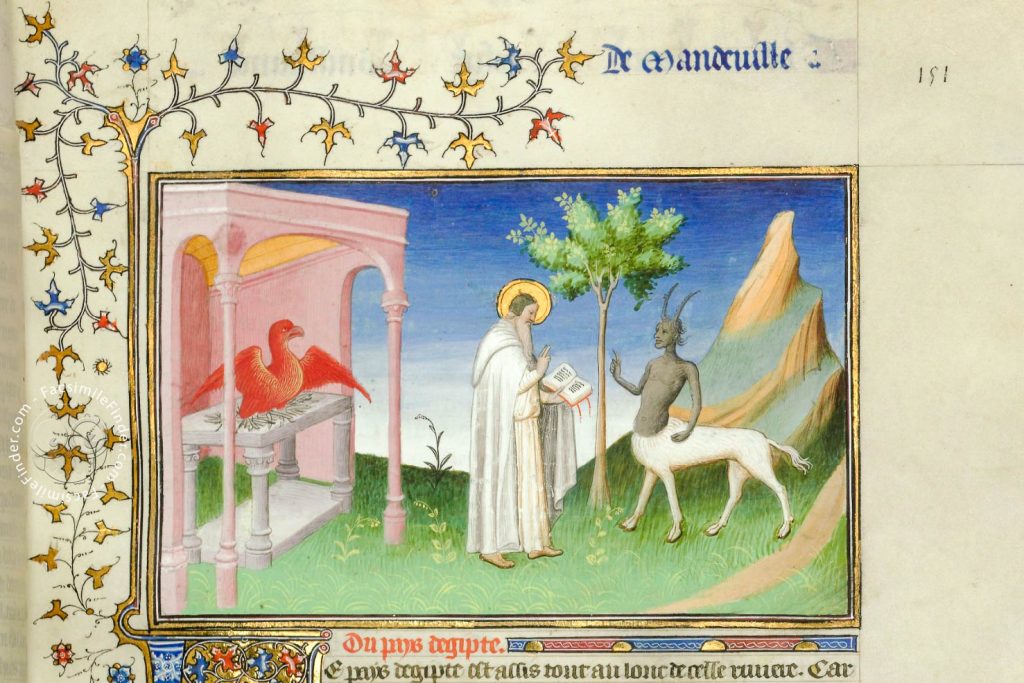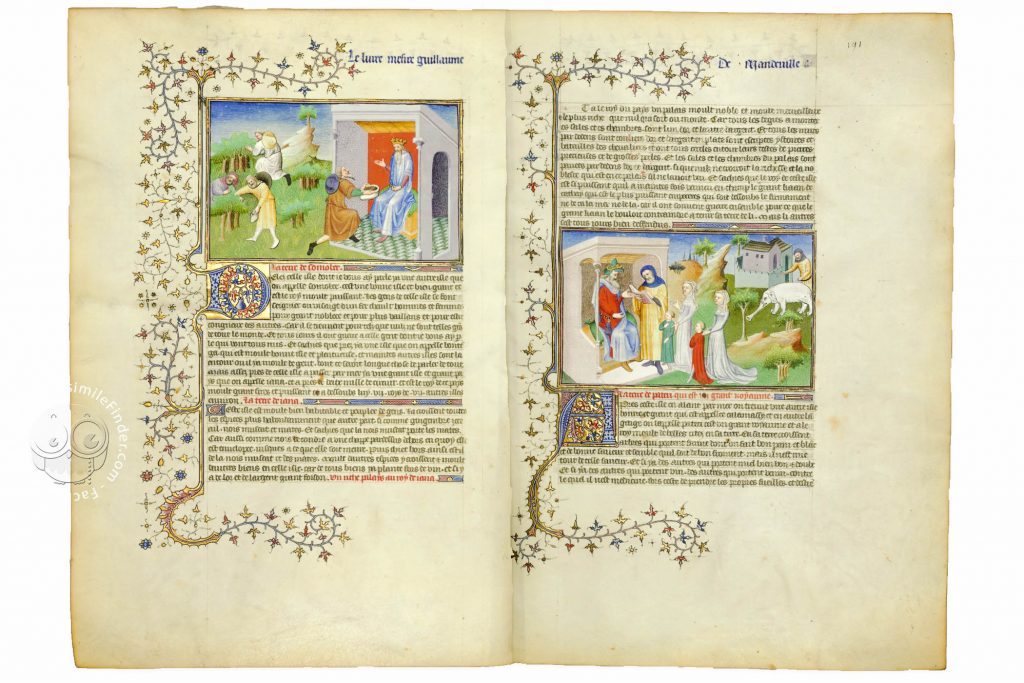The new year comes with fresh and exciting news in the world of facsimiles! Just a few days ago the facsimile edition of one of the most interesting manuscripts of travel literature was announced: it’s the Travels of Jean de Mandeville.
Dear all, we are back from the holiday season with a bang! Just a few days ago Müller & Schindler publishing house has announced the production of the facsimile edition of an extremely fascinating manuscript: the Travels of Jean de Mandeville – a superb example of Parisian book illumination.
Of course, we will happily provide you with your own copy of the Travels of Jean de Mandeville which you can pre-order at a 20% discount sale on our ever so updated website.

Here’s a few information about the manuscript in question.
The codex, also known as Le Livre des Voyages de Jean de Mandeville, was written and illuminated in the first quarter of the 15th century in Paris and it features 74 lavishly illuminated miniatures, some of which are attributed to the Master of the Mazarine Hours.
Although what is described in the account is hardly believable, the author identifies with the character of Jean de Mandeville, an alleged knight who after 30 years of travelling the world, returns home and recounts all the things and places he saw.
The 74 miniatures are evidence of an almost unprecedented artistic excellence as they are the work of three talented artists, namely the Master of the Mazarine Hours, the Master of the Cité des dames, and the Egerton Master.
The three artists exhibit innovative art as the atypical subjects of the miniatures called on the artists to go against the fashion and art of the time which entailed realistic reproductions of reality, along with the three-dimensional technique which was developing in those years.
The significance of the iconography of the Travels of Jean de Mandeville stands in the fact that the artists were called to represent subjects which had no visual reference, such as miracles and marvels.

Oddities of the Travels of John de Mandeville
The manuscript is today known also as Ms. Français 2810, which includes other codices such as Marco Polo – the Book of Wonders, and a few others, all related for their subjects which deal with travelling literature. The manuscript of Travels of Jean de Mandeville occupies only a part, that is fols. 141r. – 225v.
Produced between 1410 and 1412, the Travels of Jean de Mandeville, are probably the work of the Benedictine monk by the name Jean d’Ypres (Jean le Long), who possibly lied behind the pseudonym of Jean de Mandeville.
A life among Royalties
Due to political reasons, Philip the Good, Duke of Burgundy, had to separate from this superb manuscript, donating it to his uncle Jean de Berry in the year 1413. Part of the duke’s collection, the codex was then provided with the emblem of de Berry.
Passed onto his great-grandson Jacques d’Armagnac, the book was supplied with an additional miniature. Other owners of the book were Charles d’Angoulême and his son Francis I, through whom the book became part of the Royal Library, today known under the name of National Library of France.
Have you fallen for it yet? If so, you will just have to wait a few months before handling your own beautiful copy, so in the meanwhile sit back and enjoy the rest of our website!
Subscribe to Our Newsletter

